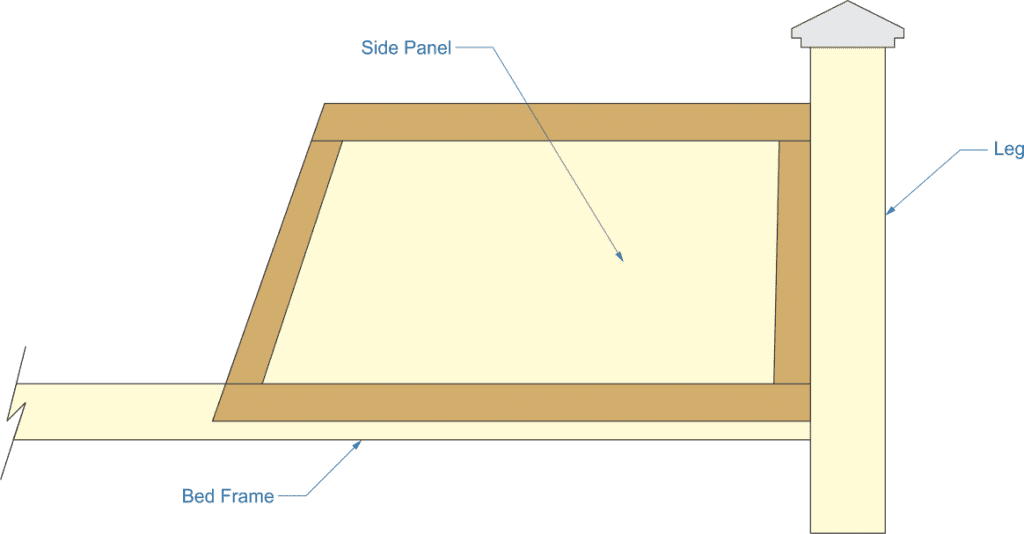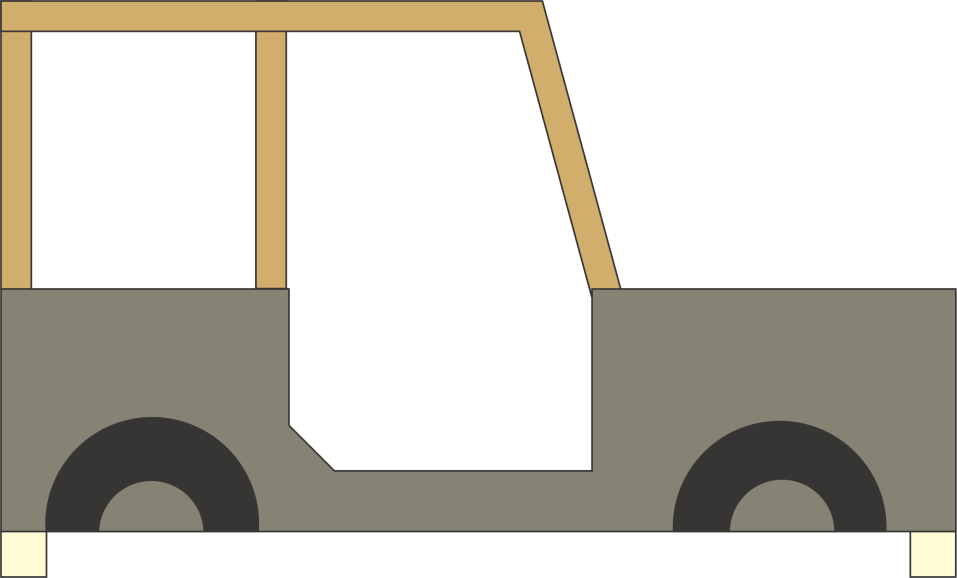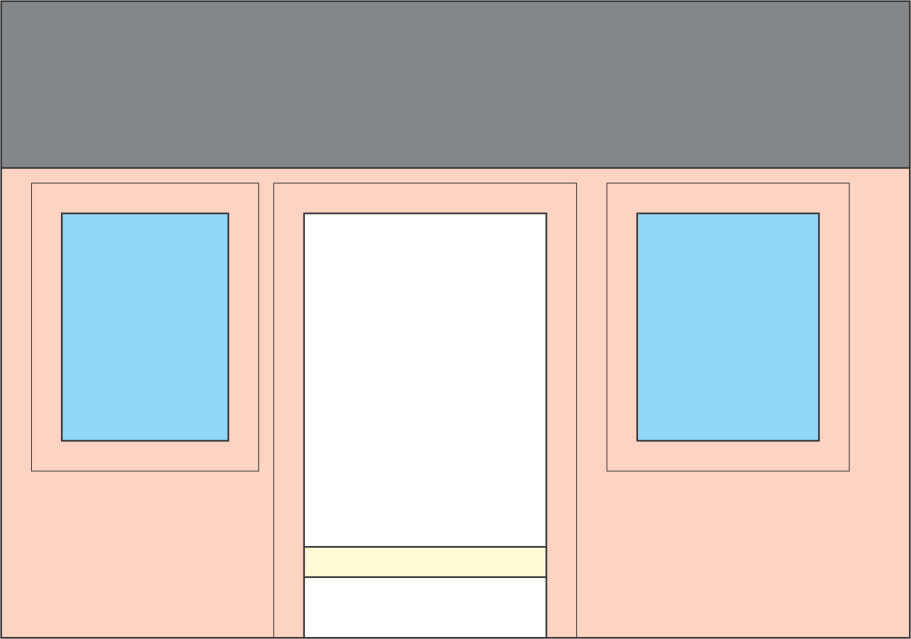At some point in time, every toddler needs to move out of their crib and into a “big girl bed” or “big boy bed.” This could mean moving up to a twin-sized bed, but for many families, the intermediate step of a toddler bed is a good move. Since the toddler bed uses the same 28”x 52”mattress that a crib does, having the child step up to a toddler bed can help save money in the short-term, putting off the cost of buying a twin bed and frame. It can also save space in a cramped apartment.
Some modern cribs are manufactured with this in mind, allowing the rail on one side to be removed, so that the crib can be used as a toddler bed. But that doesn’t help people who don’t have a bed designed with that option in mind. For those people, the best bet might be to build one from the ground up.
This is actually a rather easy project, which can be made with low-cost materials, such as construction grade lumber. It might be necessary to pick through that lumber a bit, making sure to get straight pieces; but a few knotholes can add character to the finished piece.
At its base, any bed is little more than a platform to support a mattress. This platform can be any height above the ground, although for a toddler bed it really makes sense to keep it close to the ground, in case they roll off. For that matter, the addition of rails to the sides of toddler beds is common, especially for the half of the bed where the head and body lay, leaving the lower part of the bed open for getting in and out.
Some people make their toddler beds rather fancy, shaping them to look like anything from a castle to a fire truck. While fun and creative, those design elements are actually add-ons to the basic bed. Before deciding to make a bed that includes anything like that, it’s a good idea to start out with the structure of the bed. So we’ll start there.
One thing to be cautious about is splinters. Kids seem to be experts in finding splinters in wood, so it’s important to sand and finish everything well. This is especially true if using construction grade dimensional lumber or plywood. I’ve made a lot of kids’ furniture from those materials; but it always required taking care to finish it well.
Building a Basic Toddler Bed
As previously mentioned, at the most basic level, a toddler bed is a platform, so let’s start out there. We’re only dealing with about 50 pounds of weight, so the bed’s frame doesn’t have to be very strong, unlike an adult bed. So the side rails of the frame can literally be made out of 1”x 4”s, especially since they will need to be doubled up to give room for the slats.
Build a frame out of 2”x 4”s on edge, which is the size of the mattress. Then rip some more 2”x 4”s, ¾” of an inch narrower, to make space for the slats. These pieces are going to support the slats and should be attached to the inside of the frame, gluing and nailing them flush with the bottom of the frame. Then attach the frame to newel posts to be used as the legs in the corner of the bed. These do not need to be more than 24” tall and can be capped as desired.

Adding Protective Rails
By keeping the bed close to the floor, there is little risk of the toddler being hurt, should they fall off. But additional safety can be accomplished by adding side rails to the bed. Rather than making the rails of pickets, which an arm or leg can go through, it would be best to make panels to go on either side, which would keep the toddler from falling out.
There are countless ways of doing this, but the easiest way is to cut three wood panels and frame them with 1”x 2”s. The addition of the 1”x 2”s makes it easier to round the edges, as rounded plywood edges don’t always turn out all that smooth. The edge pieces also make it easier to screw the side panels to the bed frame and corner posts. There should be enough stiffness in the side panels that they won’t need any additional support at the other end, if they are adequately attached to the legs and frame.

Getting Creative with the Toddler Bed Design
There are many ways of making the basic toddler bed more attractive and appealing to the child, depending on the child’s personality and preferences. Almost anything that one can think of, from a play house to a jeep can be used as a basic design, personalizing the bed.
The biggest thing that has to be done, in order to turn the basic bed into the fantasy of their dreams is to increase the height of the legs. Those become the main support for whatever additional panels end up being added to the bed, in order to make it a great play place for its owner. As newel posts typically come considerably longer than the 24” we discussed using, making them taller really isn’t an issue.
What may be an issue, depending on the design of the bed, is supporting the newel posts that are being used as the legs. If the bed is to be put with the side against the wall, it would be possible to create a good play place by the addition of a front panel that carries out the bed’s design. That alone is not enough to support the posts, if the posts are only attached to the frame. Some sort of cross-bracing is needed. On the other hand, if the design accommodates a panel across the ends of the bed (head and foot), then using plywood panels used for that purpose provide the needed support.

The basic design can be turned into a Jeep by the addition of some cut sides. We can still see the legs sticking down in the diagram above, with the wheels on the ground being merely decorative. Those can be cut out and attached to the sides, rather than just being cut out of the sides. The roll cage is made of 1”x 2” or 2”x 2”, adding another dimension to the overall effect. The front end (not shown) would be cut out to provide the classic Jeep style grille.
Going a slightly different way turns the bed into a playhouse, as shown below. Cut out windows and a door and frame them with 1”x 2”s or 1”x 4”s. The yellow bar going across the doorway is the bed’s frame. The roof can easily be slanted back towards the wall, adding realism.

The same basic design for the house can be modified in a number of ways, such as putting in a loft that can become a separate play area or turning the house into a castle. It all depends on the designer’s imagination and what the child the bed is being built for likes.
Keep in mind with any design that children change rapidly. What may seem ideal to them today, will quickly become something that they leave behind. Don’t be disappointed when that happens. They’ll be stepping up to a bigger bed anyway and the practice in making the toddler bed will serve well in building them a larger, personalized bed.



